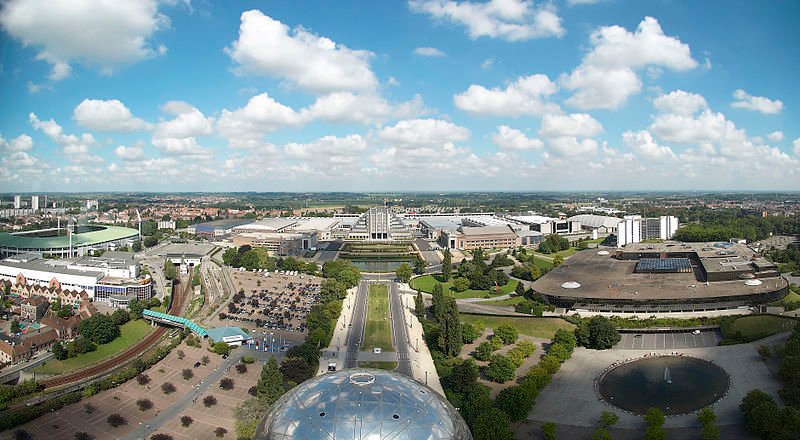 A panorama of Brussels from the Atomium
A panorama of Brussels from the AtomiumSource: https://commons.wikimedia.org/wiki/File:Brussels_view_A.jpg
Author: Wouter Hagens

Brussels is the capital and biggest city in Belgium. It is part of the Brussels Region, a metropolitan area which comprises 19 municipalities called communes or gemeenten. The metropolitan area of Brussels covers 161.4 sq km (62.2 sq mi) and has a population of 1.83 million people (2011 estimate). It is within the Central Europe Time zone, which is an hour ahead of Coordinated Universal Time (UTC+1) and two hours ahead during Daylight Saving Time in summer.
Brussels is also the capital of the European Union and the seat of the French Community of Belgium. The modern city of Brussels is within the Brussels-Capital Region, which was established on 18 June, 1989. It is one of the three federal regions of Belgium, which includes Flanders and Wallonia.
Brussels on Google Maps Street View
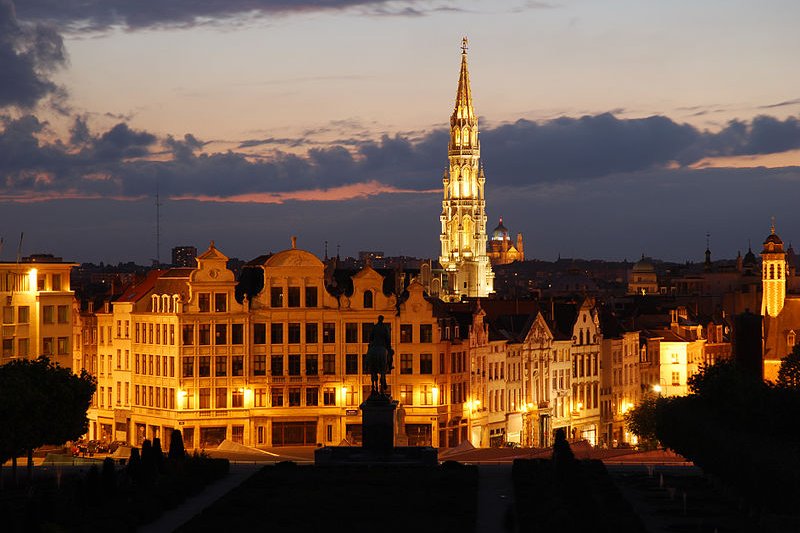 View of Place de l'Albertine in Brussels with the towering City Hall, and statue of King Albert I in silhouette
View of Place de l'Albertine in Brussels with the towering City Hall, and statue of King Albert I in silhouetteSource: https://commons.wikimedia.org/wiki/File:Montdesarts.jpg
Author: Emilio García

The city of Brussels was established in the 10th century. Its name is believed to have been derived from Broeksel, a word in Old Dutch meaning "home in the marshes". The official year in which Brussels was founded is stated as AD 979. That was when Duke Charles of Lower Lotharingia transferred the relics of Saint Gudula to the Saint Gaugericus Chapel, and built the first permanent defences for the city.
Brussels quickly grew and by the 14th century, a second set of fortification had to be erected for the expanding city. Today a concentric ring of roads follow the course of the old fortification.
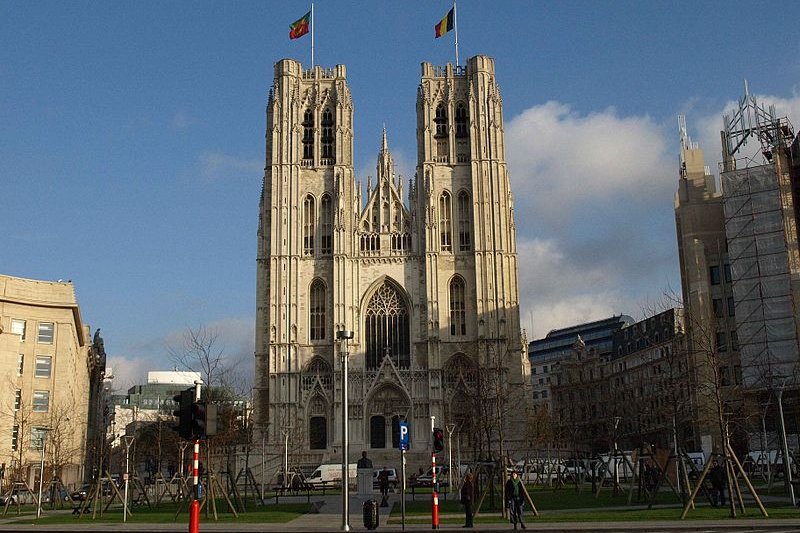 Cathédrale Saints-Michel-et-Gudule, Brussels
Cathédrale Saints-Michel-et-Gudule, BrusselsSource: https://commons.wikimedia.org/wiki/File:Sainte_Catherine,_Bruxelles,_Belgique.jpg
Author: Prosopee

Brussels is officially bilingual. However, as 80% of its population speak French as the first language while 20% speak Dutch, French is predominantly used in the city. The French spoken in Brussels is similar to standard French while Belgian Dutch is slightly different from standard Dutch. Visitors who speak English will not have much problem as many people, particularly those working in the tourist industry, will understand English.
Brussels experiences an oceanic climate, or a maritime temperate climate. The Atlantic Ocean moderates the climate. Warmest months are July and August, with average high temperatures of 22.4°C (72.3°F) or higher. Coldest months are January and February, when the average low temperatures drop to 0.7°C (33.3°F) or below. Precipitation is fairly spread out through the year, with November and December receiving slightly more rain. Snow is not common in Brussels, occurring only once or twice a year.
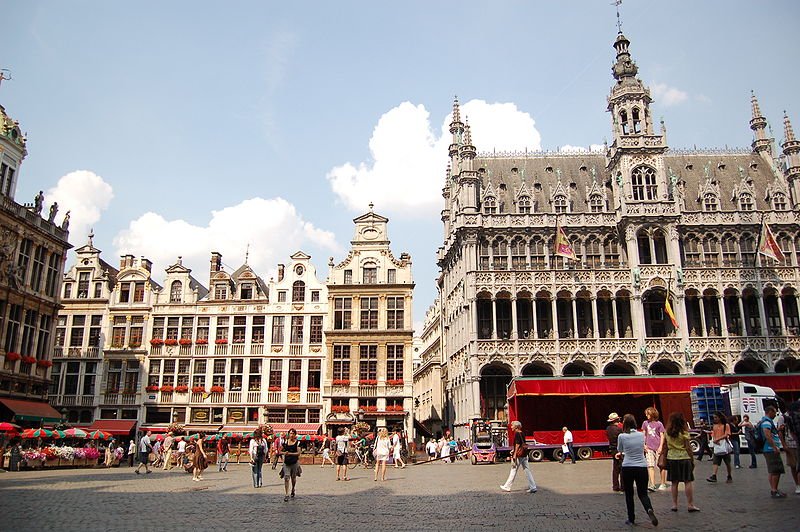 Grand Place/Grote Markt, Brussels
Grand Place/Grote Markt, BrusselsSource: https://commons.wikimedia.org/wiki/File:Bruxelles_Grand_Place.JPG
Author: KoS

Visiting Brussels, Belgium
The main airport for Brussels is the Brussels Airport, also called Brussels National or Zaventem Airport (BRU), the base for Brussels Airlines. There are flights connecting it with major cities in Europe. Alternatively, if you fly by a low cost carrier such as Ryanair or Wizzair, the airport used is the Brussels South Charleroi Airport (CRL), located an hour south of downtown Brussels.You can easily reach Brussels by train. It has three railway stations, namely Midi-Zuid, Central-Centraal and Nord-Noord. High-speed trains connect Brussels with major cities of Europe, stopping at any of the three stations.
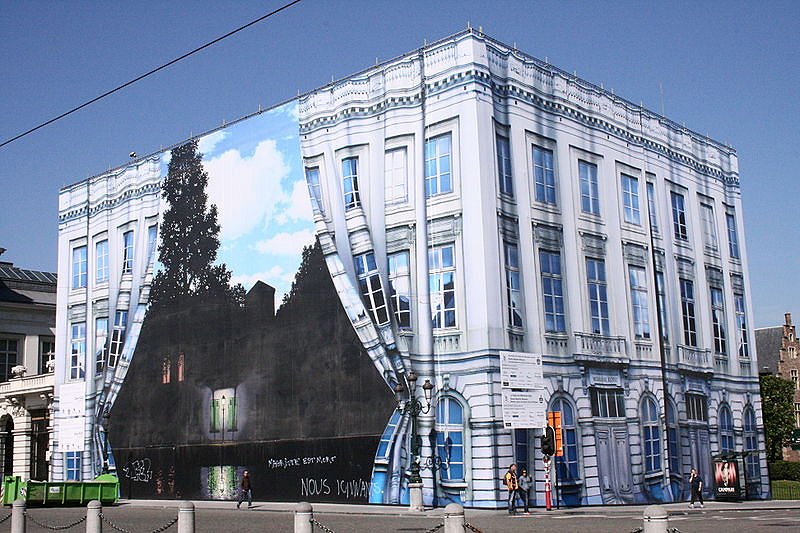 Musée Magritte/Magritte Museum, Brussels
Musée Magritte/Magritte Museum, BrusselsSource: https://commons.wikimedia.org/wiki/File:Bruxelles_Mus%C3%A9e_Magritte.jpg
Author: Michel wal

Exploring Brussels
You can do it on foot, as the city, particularly the Old Town, is fairly compact. For longer distances, there is the STIB-MIVB metro trains. Look for the big M signage in blue and white. The metro, which began operating in 1976, now has six lines. Tickets are available for single rides, as well as for blocks of five or ten rides (€12.30). If you intend to use the metro extensively, there's also the one-day pass (€4.50) and 3-day pass (€9.50).Places of Interest in Brussels, Belgium
- Atomium
- Autoworld
- Belgium Comic Strip Center
- Bourse
- Cantillon Brewery
- European Parliament
- Grand Place/Grote Markt
- Horta Museum
- Manneken Pis
- Mini-Europe
- Musé BELvue/BELvue Museum
- Musée d'Extrême-Orient/Musea van het Verre Oosten
- Musée du Cinéma/Filmmuseum
- Musée Magritte/Magritte Museum
- Musée Royal de l'Armée/Koninklijk Museum van het Leger en van der Militaire Geschiedenis
- Musée Royaux d'Art et d'Histoire/Koninklijke Musea voor Kunst en Geschiedenis
- Musée Royaux des Beaux Arts de Belgique/Koninklijke Musea voor Schone Kunsten van België
- Musical Instruments Museum
- National Sciences Museum of Belgium
- Palais Royale/Koninklijk Paleis
- Parc du Cinquantenaire/Jubelpark
- Royal Museum of Central Africa
- Statue of Europe
Municipalities of Brussels
- Brussels/Ixelles-Elsenes
- Bruxelles/Brussel
- Marolles/Marollen
- Molenbeek/Molenbeek
- Saint-Gilles/Sint-Gillis
- St-Josse/Sint-Joost
- Uccle/Ukkel
- Woluwé-Saint-Pierre/Sint-Pieters-Woluwe
- Woluwé-Saint-Lambert/Sint-Lambrechts-Woluwe
 Latest updates on Penang Travel Tips
Latest updates on Penang Travel Tips
 Discover with Timothy YouTube Channel
Discover with Timothy YouTube Channel
 PG Food Channel
PG Food Channel
 Learn Penang Hokkien YouTube Channel
Learn Penang Hokkien YouTube Channel
 SojiMart Videos
SojiMart Videos
Latest from Discover with Timothy: Gurney Bay - what to see and do there
About this website

Hello and thanks for reading this page. My name is Timothy and my hobby is in describing places so that I can share the information with the general public. My website has become the go to site for a lot of people including students, teachers, journalists, etc. whenever they seek information on places, particularly those in Malaysia and Singapore. I have been doing this since 5 January 2003, for over twenty years already. You can read about me at Discover Timothy. By now I have compiled information on thousands of places, mostly in Peninsular Malaysia and Singapore, and I continue to add more almost every day. My goal is to describe every street in every town in Malaysia and Singapore.
Robbie's Roadmap
- Episode 1: Robbie's Journey to Financial Freedom
- Episode 2: Lost in America
- Episode 3: The Value of Money
- Episode 4: The Mentor
- Episode 5: The Thing that Makes Money
- Episode 6: The walk with a Billionaire
- Episode 7: The Financial Freedom Awakening
- Episode 8: Meet Mr Washington
- Episode 9: The Pizzeria Incident
Copyright © 2003-2024 Timothy Tye. All Rights Reserved.


 Go Back
Go Back